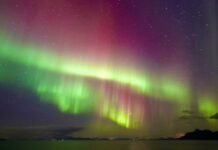For stargazers with clear skies this week, there’s a celestial show worth staying up for. The annual Taurid meteor shower is putting on a display, and it might be brighter than usual thanks to a waning moon.
While most meteor showers last just a few nights, the Taurids are known for their endurance – they grace the night sky from mid-October into November. This year’s peak activity is expected between November 5th and 12th. Unfortunately, a bright full moon on November 5th initially dimmed the display. However, as the moon wanes (it reaches its last quarter phase on November 12th), stargazers will have increasingly longer windows of darkness for optimal viewing.
The Best Time to Watch
Wednesday night (November 12th) looks promising. Expect about four hours of dark sky before the moon rises after midnight, offering excellent conditions to spot meteors moving across the blackness. Before then, throughout the week, up to 15 Taurids could grace the sky each hour. These aren’t your typical streaks of light; they often appear as yellowish-orange hues and move noticeably slower than other meteors.
Why Taurid Meteors Stand Out
The name “Taurid” comes from their apparent origin point: the constellation Taurus, the Bull. You can find this constellation low in the east shortly after sunset. By 1:30 a.m., it will be high overhead. The meteors themselves result from debris left behind by Comet Encke— fragments larger than those shed by other comets. This is why Taurids occasionally produce spectacularly bright “fireballs.”
Remember, “shooting stars” are actually not stars at all. They’re pieces of space debris that burn up in Earth’s atmosphere as they travel at high speeds. Taurid meteors, however, are relatively slow, entering our atmosphere at just 17 miles per second.
Double Meteor Shower Delight!
The Taurids aren’t the only celestial spectacle this month. Keep your eyes peeled for the Leonids, which will peak in the early morning hours of Tuesday, November 18th. With a new moon coinciding with the peak, viewing conditions should be excellent. These meteors appear to stream from the Sickle asterism (a prominent star pattern) within the constellation Leo, rising in the northeast around midnight and climbing high in the south-southeast before dawn. While they last less than a week, Leonids are known for their incredible speed; they’re considered one of the fastest meteor showers.
Don’t forget: the best viewing is from a location with minimal light pollution—get away from city lights to maximize your chances of catching these dazzling celestial displays!











































